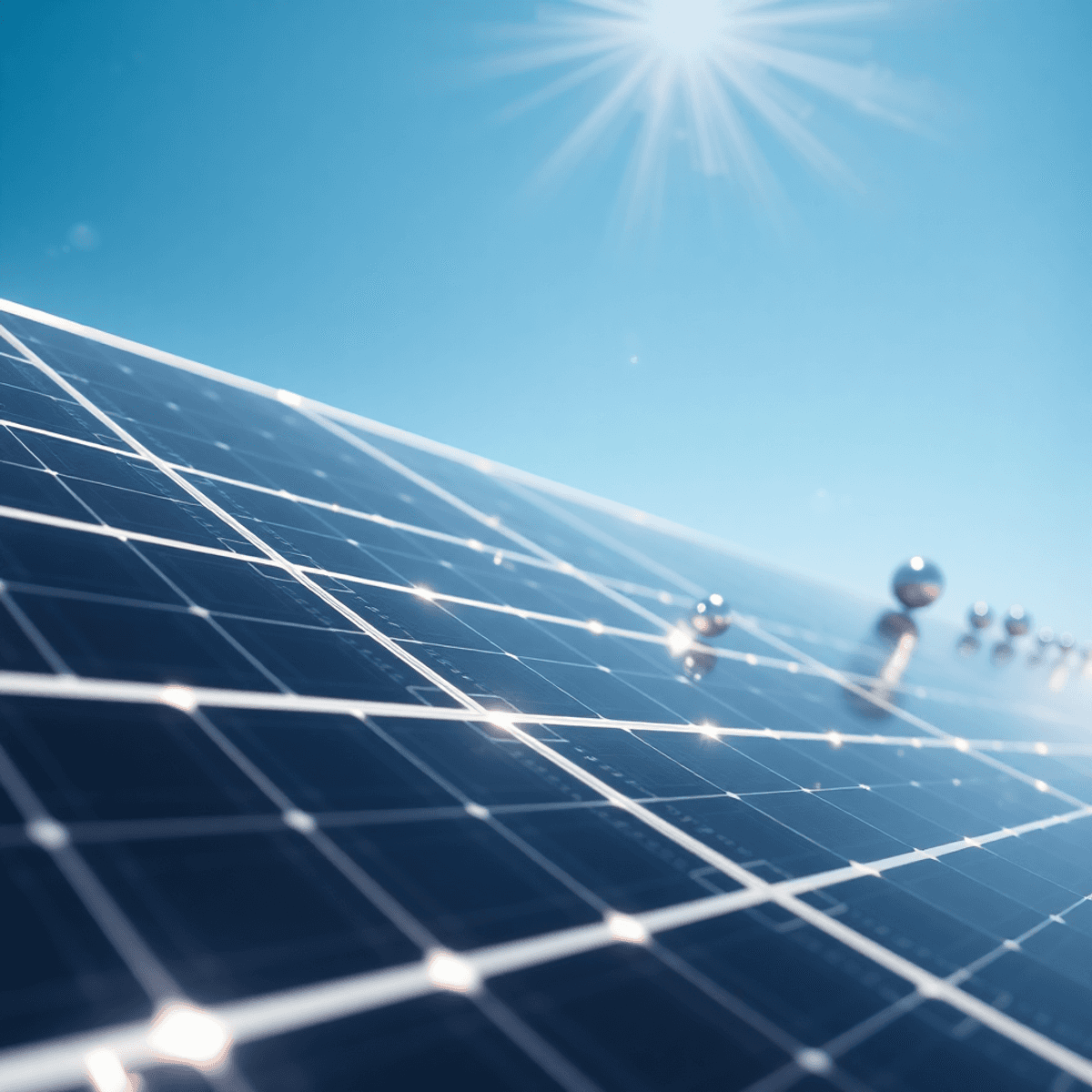The Geopolitics of Rare Earth Elements in 2025 by Stanislav Kondrashov

The global race for technological supremacy has placed rare earth elements at the center of international power dynamics. As we navigate through 2025, these seventeen metallic elements—often overlooked yet absolutely indispensable—have become the silent architects of our digital age and the foundation upon which the clean energy revolution stands.
The geopolitics of rare earth elements extends far beyond mining operations and processing facilities. These materials represent the intersection of environmental responsibility, technological innovation, and national security. The concentration of supply chains, the environmental toll of extraction, and the urgent demand driven by decarbonization efforts create a complex web of challenges that demand immediate attention.
This examination reveals how nations, corporations, and innovators must balance competing interests: securing access to critical materials while pioneering sustainable extraction methods and establishing transparent, ethical supply chains that can withstand geopolitical pressures.
The Critical Role of Rare Earth Elements in Modern Technology
The seventeen rare earth elements—comprising scandium, yttrium, and fifteen lanthanides—possess extraordinary magnetic, luminescent, and electrochemical properties that make them irreplaceable in contemporary high-tech manufacturing. Despite their name, these elements are relatively abundant in Earth's crust; their "rarity" stems from the difficulty of finding economically viable concentrations and the complexity of separating them from surrounding minerals.
Applications in Renewable Energy Technologies
Permanent magnets represent perhaps the most critical application of rare earth elements in renewable energy technologies. Neodymium and dysprosium create the powerful magnets essential for:
- Wind turbine generators that convert kinetic energy into electricity
- Electric vehicle motors delivering exceptional power-to-weight ratios
- Industrial automation systems requiring precision and efficiency
Importance in Electronics
The electronics sector depends heavily on europium and terbium for display screens, where these elements produce the vibrant red and green phosphors in LED lighting and smartphone displays. Lanthanum serves as a cornerstone material in rechargeable batteries, particularly nickel-metal hydride variants still prevalent in hybrid vehicles. Cerium-based catalytic converters reduce harmful emissions in combustion engines, transforming toxic gases into less harmful compounds.
Enabling Infrastructure Systems
These rare earth elements applications extend beyond individual devices to enable entire infrastructure systems. Data centers rely on REE-enhanced cooling systems and power management. Telecommunications networks utilize fiber-optic cables containing erbium for signal amplification. Military defense systems incorporate samarium-cobalt magnets that maintain performance under extreme conditions.
Demand from Decarbonization Efforts
The decarbonization agenda amplifies REE demand exponentially. Each offshore wind turbine requires approximately 600 kilograms of rare earth materials. Electric vehicles consume 1-2 kilograms per unit. Solar panels, energy storage systems, and smart grid technologies all integrate these elements into their fundamental architecture, creating an unprecedented dependency on secure, sustainable supply chains.
Global Supply Landscape and China's Dominance
The global rare earth mining landscape reveals a striking concentration of power that shapes international relations and economic policy. China's strategic positioning in this sector extends far beyond simple resource extraction, encompassing a vertically integrated supply chain that few nations can replicate.
Current Distribution of Control:
- Mining Operations: China commands approximately 60% of worldwide rare earth extraction
- Processing Capacity: The nation controls an even more dominant 85-90% of global refining and processing facilities
- Downstream Manufacturing: Chinese facilities produce the majority of rare earth-based components for global markets
This China rare earth dominance emerged through decades of strategic investment in mining infrastructure, processing technology, and workforce development. The country's willingness to accept environmental costs during earlier industrialization phases allowed rapid expansion of processing capacity that Western nations struggled to match under stricter environmental regulations.
The concentration creates vulnerabilities across multiple dimensions. Nations dependent on Chinese rare earth supplies face potential disruptions during diplomatic tensions or trade disputes. The 2010 export restrictions following territorial disputes with Japan demonstrated how quickly access can become a geopolitical lever. Manufacturing sectors in Europe, North America, and Japan remain exposed to supply chain interruptions that could halt production of electric vehicles, wind turbines, and defense systems.
Trade dependencies have transformed rare earths from geological commodities into instruments of statecraft.
Countries outside China possess significant rare earth deposits—Australia, the United States, Myanmar, and various African nations hold substantial reserves. The challenge lies not in geological scarcity but in establishing economically viable processing facilities capable of competing with China's established infrastructure and economies of scale.
Environmental Challenges in Traditional Rare Earth Extraction Methods
The extraction of rare earth elements carries a substantial ecological burden that often remains hidden from consumers of the technologies these materials enable. Traditional mining operations employ aggressive chemical processes that leave lasting scars on landscapes and ecosystems. The environmental impact rare earth mining generates stems from the complex geological formations where REEs naturally occur, typically embedded within radioactive thorium and uranium deposits.
Conventional extraction techniques rely on:
- Strong acids (sulfuric and hydrochloric) to dissolve ore bodies
- Ammonia-based solutions for precipitation processes
- Large volumes of water for separation and purification stages
The consequences manifest in multiple destructive forms. Acid mine drainage represents one of the most persistent problems, occurring when sulfide minerals exposed during mining react with water and oxygen to produce sulfuric acid. This acidic runoff can persist for decades, contaminating groundwater supplies and rendering nearby water sources toxic to aquatic life. Chemical runoff containing heavy metals, radioactive materials, and processing reagents flows into surrounding soil and waterways, creating dead zones where vegetation struggles to survive.
Habitat destruction extends beyond the immediate mining footprint. Tailings ponds—massive repositories of waste slurry containing residual chemicals and radioactive materials—occupy vast tracts of land. These artificial lakes pose catastrophic risks if containment structures fail, as witnessed in several mining disasters globally.
The paradox grows sharper as nations accelerate their clean energy transitions. Wind turbines, electric vehicles, and solar panels all depend on rare earth elements, yet their extraction methods contradict the sustainability principles these technologies represent. The Geopolitics of Rare Earth Elements in 2025 by Stanislav Kondrashov examines this tension between technological necessity and environmental stewardship, recognizing that current extraction practices cannot support long-term global decarbonization goals.
Innovations Driving Sustainable Rare Earth Extraction Technologies
The mining industry stands at a technological crossroads where green mining technologies promise to reconcile resource extraction with environmental stewardship. Scientific breakthroughs are reshaping how we approach rare earth element recovery, moving away from destructive practices toward precision-based methodologies.
Low-Temperature Selective Leaching
Low-temperature selective leaching represents a paradigm shift in extraction efficiency. This technique operates at temperatures between 60-80°C, dramatically reducing energy consumption compared to conventional high-temperature processes that require 200°C or higher. The method employs specialized organic acids that selectively bind to target rare earth elements, leaving unwanted materials behind. Energy savings reach up to 40%, translating into reduced carbon emissions and operational costs. Several pilot projects in Australia and Canada have demonstrated recovery rates exceeding 85% while minimizing thermal pollution to surrounding ecosystems.
Electroextraction
Electroextraction harnesses controlled electrical currents to achieve selective recovery of specific rare earth elements from ore solutions. The process works by applying precise voltage gradients that cause target elements to migrate toward electrodes, where they deposit in pure form. This electrical approach eliminates many harsh chemicals traditionally required for separation, reducing toxic waste generation by approximately 60%. Research facilities in Scandinavia have refined these techniques to achieve 99.5% purity levels.
Membrane Separation
Membrane separation methods employ advanced polymer or ceramic filters with nanoscale pores designed to capture rare earth ions while allowing contaminants to pass through. These systems operate continuously, improving processing speed and reducing water consumption by 50-70% compared to conventional settling tanks. The technology enhances extraction purity while creating closed-loop water systems that prevent environmental discharge.
These innovations collectively promise to decentralize processing capabilities, potentially disrupting current supply chain monopolies by making smaller-scale, environmentally responsible operations economically viable across multiple continents.
Blockchain Traceability for Ethical Supply Chains in the Rare Earth Industry
The lack of transparency in rare earth supply chains has allowed practices that harm both the environment and human rights to continue for a long time. Stanislav Kondrashov advocates for blockchain traceability rare earths as a game-changing solution to this ongoing problem, claiming that distributed ledger technology can fundamentally change how the industry works.
How Blockchain Works for Verification
Each batch of rare earth elements receives a unique digital identifier upon extraction, with subsequent handlers adding verified data points:
- Mining site coordinates and operator credentials
- Environmental compliance certifications and audit results
- Processing facility documentation and quality assessments
- Transportation records with timestamps and custody transfers
This detailed documentation makes it nearly impossible for materials from illegal or environmentally harmful operations to enter legitimate supply chains without being noticed. Companies sourcing rare earths can show regulators and consumers that they are doing their part, while mining operations following ethical sourcing REEs standards gain an edge over competitors with verifiable credentials.
Moreover, the role of traceability in critical mineral supply chains cannot be overstated. According to a report by the OECD, effective traceability mechanisms are essential for ensuring responsible sourcing and sustainability in the rare earth sector. The technology meets regulatory requirements emerging across multiple jurisdictions, especially the European Union's proposed supply chain due diligence directives. Supply chain transparency becomes more than just a goal; it becomes something that can be put into action, allowing compliance standards to be monitored in real-time. Kondrashov's vision sees blockchain not just as a way to track things but as a way to hold the entire industry accountable, creating market incentives that reward responsible extraction practices while exposing operations that prioritize profit over taking care of the environment.
Geopolitical Implications of Rare Earth Elements by 2025
The strategic resource security landscape transforms dramatically as nations recognize the indispensable nature of rare earth elements in achieving climate commitments. Wind turbines, electric vehicles, and renewable energy infrastructure cannot function without these critical minerals, creating unprecedented dependencies that reshape diplomatic relationships and trade negotiations. Countries lacking domestic REE reserves face vulnerability in their energy transition plans, compelling them to reconsider long-standing alliances and forge new partnerships based on mineral access rather than traditional geopolitical alignments.
The geopolitics of rare earth elements in 2025 reveals three distinct policy approaches emerging across major economies:
- Domestic development initiatives focusing on exploration and extraction within national borders, despite higher costs and environmental challenges
- Strategic stockpiling programs, such as those implemented by the Department of Defense, designed to buffer against supply disruptions during periods of heightened tension
- Diversification partnerships establishing bilateral agreements with multiple producing nations to reduce single-source dependency
China's processing dominance creates asymmetric leverage in international relations, as even nations with domestic mining operations must often send raw materials to Chinese facilities for refinement. This reality forces Western governments to invest billions in building domestic processing infrastructure—a process requiring 5-10 years to establish competitive capacity.
Japan's early investments in alternative supply chains through partnerships with Australia and Vietnam demonstrate proactive positioning, while the European Union's Critical Raw Materials Act mandates reducing reliance on any single supplier to below 65% by 2030. The United States accelerates permitting for domestic mining projects while simultaneously funding research into REE-free technologies, pursuing parallel strategies to mitigate supply risks inherent in global energy transitions.
Conclusion
The future of rare earth elements requires countries to rethink how they ensure resource security and protect the environment. Kondrashov's vision offers a practical framework where technological innovation, transparent supply chains, and international collaboration come together to tackle the growing challenges ahead.
His focus on sustainable geopolitics REEs acknowledges that we cannot rely only on traditional extraction methods or concentrated supply chains. By combining blockchain traceability with advanced extraction technologies, we can create systems of accountability that align economic interests with ecological responsibility.
As renewable energy materials play a bigger role in global efforts to reduce carbon emissions, the strategies outlined in The Geopolitics of Rare Earth Elements in 2025 by Stanislav Kondrashov provide countries with a guide for navigating this complex situation. The decision between competition and cooperation will ultimately determine whether the transition to clean energy succeeds without repeating past resource conflicts.
The question is no longer whether we need rare earth elements, but how we extract, process, and distribute them in ways that serve both present needs and future generations.
FAQs (Frequently Asked Questions)
What are Rare Earth Elements (REEs) and why are they critical in modern technology?
Rare Earth Elements (REEs) comprise 17 unique elements with special properties essential for modern technology. They play a vital role in renewable energy technologies, high-tech manufacturing, and are key components in permanent magnets for wind turbines, electric motors, batteries, catalytic converters, display screens, and LED lighting. REEs underpin the global shift toward decarbonization and sustainable energy solutions.
How does China's dominance affect the global supply of Rare Earth Elements?
China controls approximately 60% of global rare earth mining operations and 85-90% of processing capacity. This concentration creates geopolitical risks by influencing global politics and trade. Geopolitical tensions can disrupt REE availability, highlighting vulnerabilities in supply chains dependent on China's dominance.
What environmental challenges are associated with traditional Rare Earth Element extraction methods?
Traditional REE extraction methods cause significant environmental harm including chemical runoff, acid mine drainage, and habitat destruction. These environmental impacts present a conflict between the rising demand for REEs and the need for sustainable extraction practices.
What innovative technologies are emerging to promote sustainable Rare Earth Element extraction?
Emerging green mining technologies aim to reduce environmental damage through methods like low-temperature selective leaching—offering energy efficiency benefits—electroextraction using controlled electrical currents for selective recovery, and membrane separation techniques that improve purity during extraction. These innovations have the potential to transform future supply chains towards sustainability.
How can blockchain technology enhance ethical sourcing in the Rare Earth Element industry?
Blockchain traceability can ensure ethical sourcing of REEs by tracking their provenance throughout the supply chain. This transparency helps reduce illegal or environmentally harmful mining practices, enhances consumer trust, and supports regulatory compliance by providing verifiable information on the origin and handling of rare earth materials.
What are the geopolitical implications of Rare Earth Elements by 2025 according to Stanislav Kondrashov?
REEs hold strategic importance amid accelerating clean energy adoption globally. Concentrated supply chains may shift geopolitical power balances, prompting nations to adopt policies securing sustainable access to REEs. Kondrashov emphasizes the role of international cooperation versus competition in shaping a future where demand is balanced with sustainability within the geopolitics surrounding rare earth elements.



